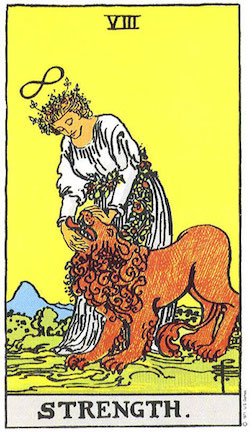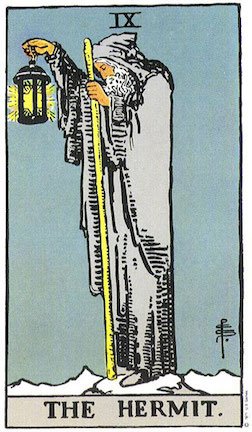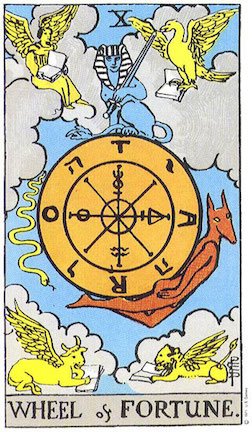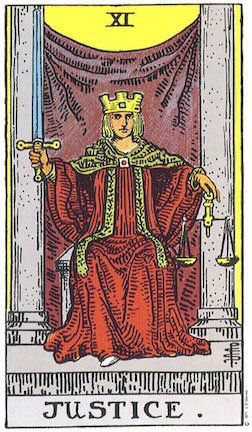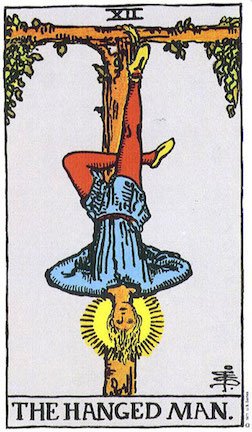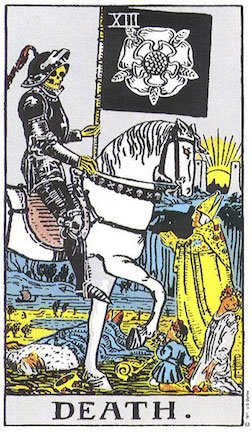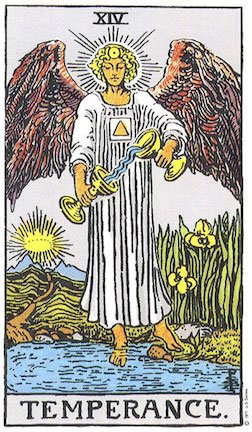The Fool’s Journey (Part 2)
The Fool’s Journey is a metaphor for man’s journey through life, expressed pictographically through tarot cards. Each major arcana card stands for a stage on that journey; an experience that a person must incorporate to realize his wholeness.
The 22 descriptions given below tell us the story of the Fools’s Journey.
The information on this page comes from Joan Bunning. Take a look at the source on her site.
KEY VIII : STRENGTH
Over time, life presents the Fool with new challenges, some that cause suffering and disillusionment. He has many occasions to draw on the quality of Strength (VIII). He is pressed to develop his courage and resolve and find the heart to keep going despite setbacks.
The Fool also discovers the quiet attributes of patience and tolerance. He realizes the willful command of the Chariot must be tempered by kindliness and the softer power of a loving approach. At times, intense passions surface, just when the Fool thought he had everything, including himself, under control.
KEY IX : THE HERMIT
Sooner or later, the Fool is led to ask himself the age-old question “Why?” He becomes absorbed with the search for answers, not from an idle curiosity, but out of a deeply felt need to find out why people live, if only to suffer and die. The Hermit (9) represents the need to find deeper truth.
The Fool begins to look inward, trying to understand his feelings and motivations. The sensual world holds less attraction for him, and he seeks moments of solitude away from the frantic activity of society. In time he may seek a teacher or guide who can give him advice and direction.
KEY X : WHEEL OF FORTUNE
After much soul-searching, the Fool begins to see how everything connects. He has a vision of the world’s wondrous design; its intricate patterns and cycles.
Fortune (10) is a symbol of the mysterious universe whose parts work together in harmony. When the Fool glimpses the beauty and order of the world, if only briefly, he finds some of the answers he is seeking.
Sometimes his experiences seem to be the work of fate. A chance encounter or miraculous occurrence begins the process of change. The Fool may recognize his destiny in the sequence of events that led him to this turning point. Having been solitary, he feels ready for movement and action again. His perspective is wider, and he sees himself within the grander scheme of a universal plan. His sense of purpose is restored.
KEY XI : JUSTICE
The Fool now looks back over his life to trace the cause and effect relationships that have brought him to this point. He takes responsibility for his past actions so he can make amends and ensure a more honest course for the future. The demands of Justice (11) must be served so that he can wipe the slate clean.
This is a time of decision for the Fool. He is making important choices. Will he remain true to his insights, or will he slip back into an easier, more unaware existence that closes off further growth?
KEY XII : THE HANGED MAN
Undaunted, the Fool pushes on. He is determined to realize his vision, but he finds life is not so easily tamed. Sooner or later, he encounters his personal cross – an experience that seems too difficult to endure. This overwhelming challenge humbles him until he has no choice but to give up and let go.
At first, the Fool feels defeated and lost. He believes he has sacrificed everything, but from the depths he learns an amazing truth. He finds that when he relinquishes his struggle for control, everything begins to work as it should. By becoming open and vulnerable, the Fool discovers the miraculous support of his Inner Self. He learns to surrender to his experiences, rather than fighting them. He feels a surprising joy and begins to flow with life.
The Fool feels suspended in a timeless moment, free of urgency and pressure. In truth, his world has been turned upside-down. The Fool is the Hanged Man (12), apparently martyred, but actually serene and at peace.
KEY XIII : DEATH
The Fool now begins to eliminate old habits and tired approaches. He cuts out nonessentials because he appreciates the basics of life. He goes through endings as he puts the outgrown aspects of his life behind him. The process may seem like dying because it is the Death (13) of his familiar self to allow for the growth of a new one.
At times this inexorable change seems to be crushing the Fool, but eventually he rises up to discover that death is not a permanent state. It is simply a transition to a new, more fulfilling way of life.
KEY XIV : TEMPERANCE
Since embracing the Hermit, the Fool has swung wildly back and forth on an emotional pendulum. Now, he realizes the balancing stability of Temperance (14). He discovers true poise and equilibrium. By experiencing the extremes, he has come to appreciate moderation.
The Fool has combined all aspects of himself into a centered whole that glows with health and well-being. The Fool has come a long way in realizing the harmonious life.

